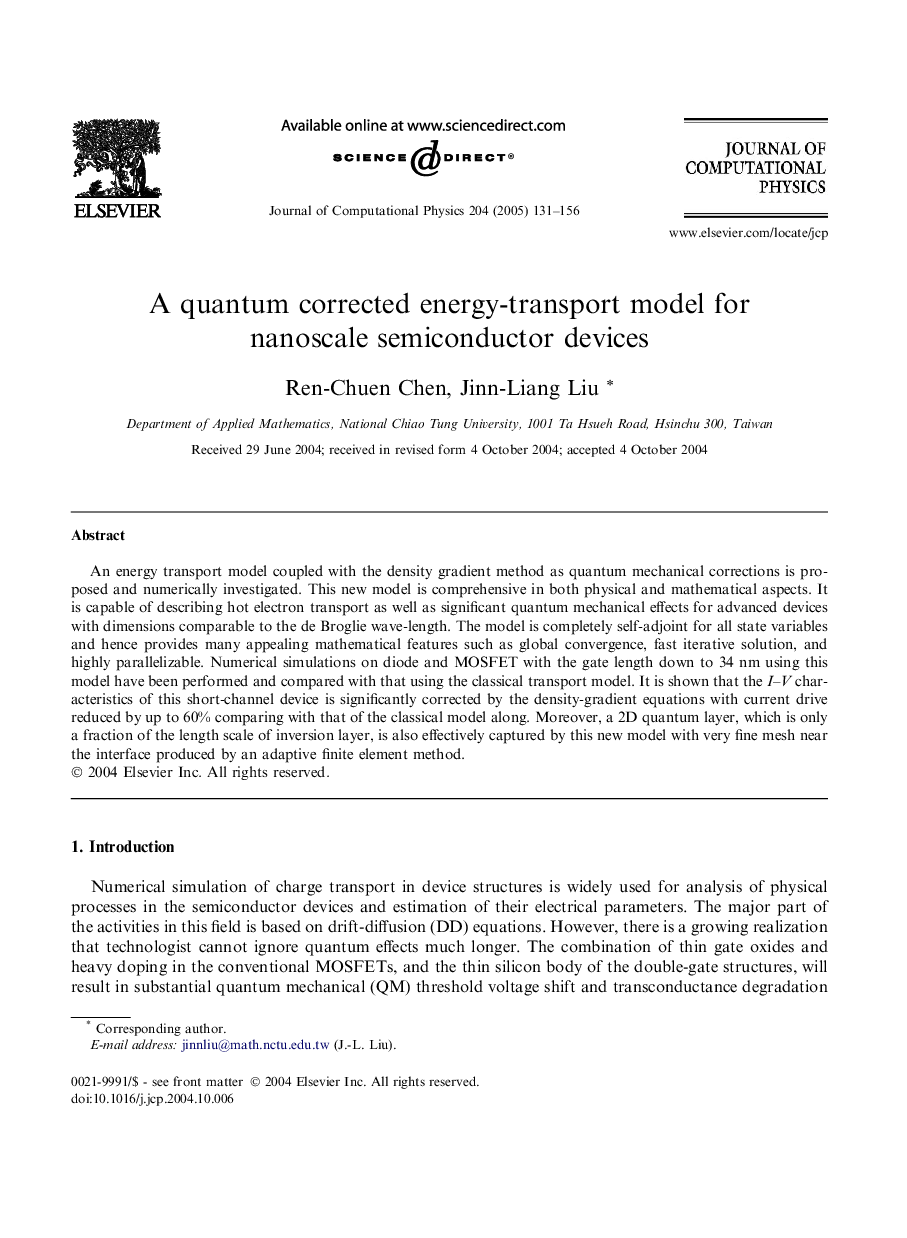| Article ID | Journal | Published Year | Pages | File Type |
|---|---|---|---|---|
| 10356440 | Journal of Computational Physics | 2005 | 26 Pages |
Abstract
An energy transport model coupled with the density gradient method as quantum mechanical corrections is proposed and numerically investigated. This new model is comprehensive in both physical and mathematical aspects. It is capable of describing hot electron transport as well as significant quantum mechanical effects for advanced devices with dimensions comparable to the de Broglie wave-length. The model is completely self-adjoint for all state variables and hence provides many appealing mathematical features such as global convergence, fast iterative solution, and highly parallelizable. Numerical simulations on diode and MOSFET with the gate length down to 34 nm using this model have been performed and compared with that using the classical transport model. It is shown that the I-V characteristics of this short-channel device is significantly corrected by the density-gradient equations with current drive reduced by up to 60% comparing with that of the classical model along. Moreover, a 2D quantum layer, which is only a fraction of the length scale of inversion layer, is also effectively captured by this new model with very fine mesh near the interface produced by an adaptive finite element method.
Related Topics
Physical Sciences and Engineering
Computer Science
Computer Science Applications
Authors
Ren-Chuen Chen, Jinn-Liang Liu,
